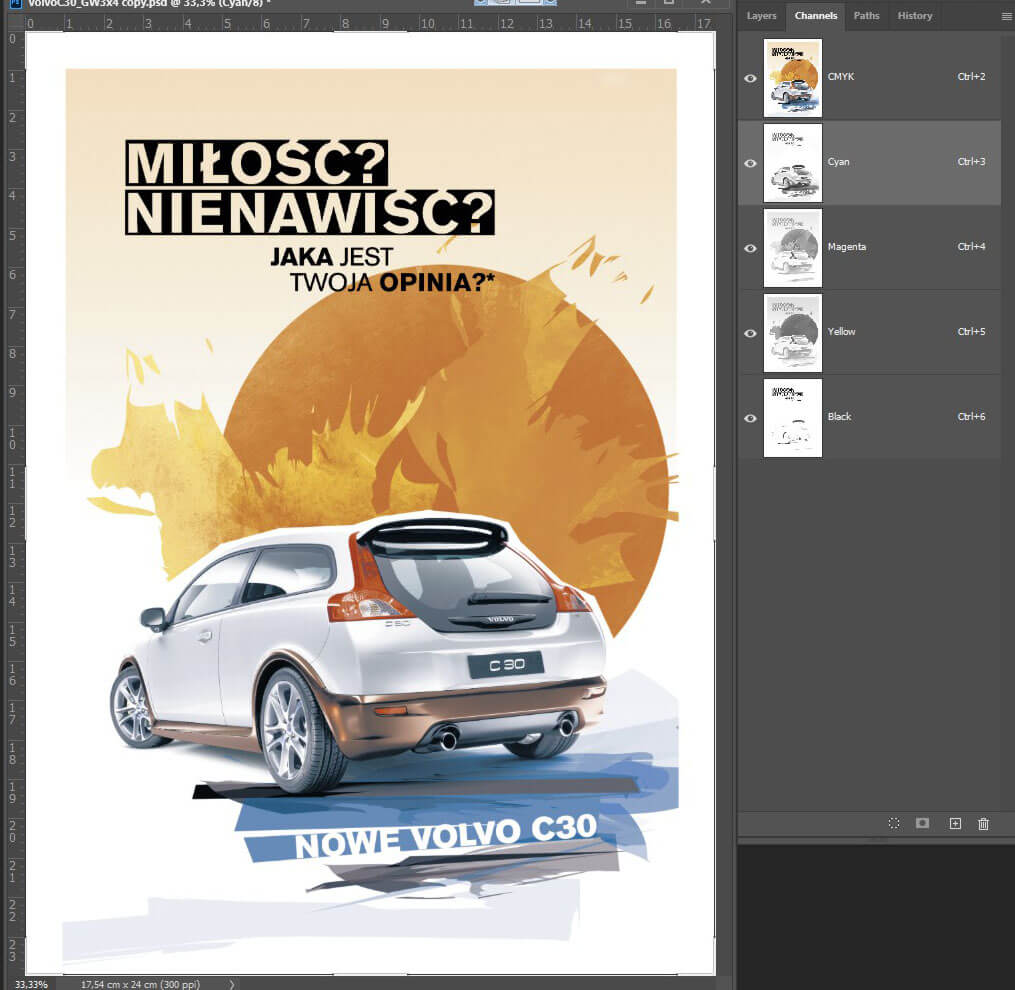Service
Get a color separation in 2 workdays!
See how it works:
Provide a project in jpeg/png
Get a free estimation in 30-minutes
Send me an email with your approval
In the matter of 1-2 workdays, you receive a payment link from the Stripe platform
Pay by clicking the link
Receive a pdf file with a separated design and the invoice
manual separation service
Manual separation benefits | Why is it better than plugins?
True representation of the design on the final product
Regardless of whether it is a complex vector image, illustration, or photorealistic graphics – manual color separation provides a result closest to the original.
Reduction of printing errors and machine downtime
Plugins are only based on 10 defined colors. During separation, they emulate colors from a defined color table, which lowers the quality of the print. Potential errors often delay production.
Better control over the final effect
Color separation performed manually gives you more control over the end result and minimizes unwanted surprises during the printing process.
Cost decrease without a loss in quality
Manual color separation is a service of the highest quality. Instead of buying another plugin, choose an offer that is actually worth your time and money.
Simulated Color Separation
This separation method is the best choice when we want to print a multicolor design or a photorealistic picture on a dark garment and we are unable to achieve this using 4 process inks Cyan, Magenta, Yellow, and Black. This type of separation consists of 1-12 colors which are converted into a raster with a particular ruling. Inks used in this separation are mid opaque which gives us better opacity on dark garments. Although the inks have better opacity, in the wet-on-wet printing process overlapping one ink over another gives us a tonal transition effect and additional colors. Simulated process separation is the method most frequently chosen by clients because it doesn’t require high precision and very good printing skills from the printer. Even a slightly bad set of jobs on the machine gives us acceptable results.
Index Process Separation
Index process separation consists in converting the design into stochastic randomly dropped rectangular same size points. They are much smaller, about ¼ of halftone dot size. That’s why this technique can be used to print very small details. Photoshop uses special algorithms to create colors from these randomly scattered points. This method allows you to successfully obtain photorealistic colors and softhand print on light and dark garments. Indexed separations usually have 6-13 colors and have to be very precisely set on the press otherwise we lose the sharpness of the print. However, this technique has also a couple of disadvantages. There is no possibility to achieve long tonal transitions and highlights. To handle this problem we use hybrid separations combining index and simulated process separation. Colors with long tonal transitions are separated into raster and the rest of the colors by using index separation.
Real Process Color Separation
Real process separation uses 4 process inks Cyan, Magenta, Yellow and Black to achieve a multicolored design. This method has many disadvantages because it can be used to print only on white and light garment. There are process inks that contain more pigment to print on white underbase but still give worse results than printing with simulated process separation with semi opaque inks. This technique is also difficult when we want to achieve bright colors like bright green or orange and skin shades. To get such colors we have to use additional screens with these colors. Real process separation is recommended to print on the press; it is also possible to print it manually but each print will be slightly different from another because when printing by hand we don’t have control over the pressure on the rackle and because of that we leave a different amount of ink on each print which has an impact on the saturation of the colors. In this method, each color is converted into a raster with a particular ruling, raster angle, and dot shape. Very often printers have a problem with the so-called Moire effect, i.e. the interference of overlapping screen lines and mesh fibers. Screens have to be very tightly stretched up to 25-35 N/m2. Registration on the press has to be very precise otherwise colors will be distorted and design will lose its sharpness.
Spot Color Separation
This technique is used to separate simple designs where each color is printed with one specific color of ink. It is also used to print text, logos, and graphics but not multicolored pictures or tonal transitions. Some spot colors in the design may have gradients but there aren’t any color overlapping and halftones of several colors. Spot colors are usually determined from the PANTONE scale and have high opacity which makes that printed design look very well on dark fabrics.



